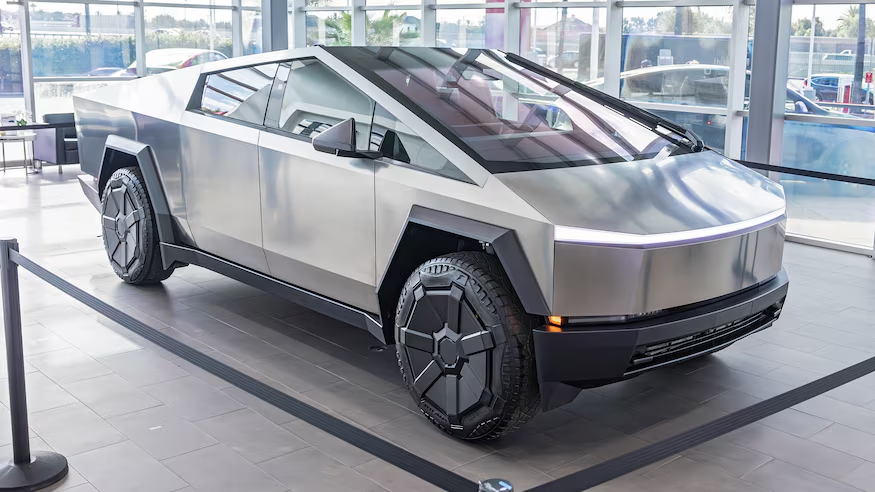Dealership owners are constantly in a limbo trying to decide which advertising means and methods will get them the highest results. Some find that traditional media is the best way to go, while others wish to implement non-traditional methods to garner a wider audience. Marketing tends to get quite expensive if you don’t know who to aim for or how to market to your target audience. With the rise of the Internet and new media, it raises questions regarding whether it is even worth using traditional advertising methods.
Traditional Advertising Methods
Before we can even get into whether traditional advertising is dead or not, it’s important to actually understand what was entailed in traditional advertising. The traditional age of advertising consisted of the use of the typical media placement venues, such as outdoor billboards, cable television, broadcast television, radio, and newspapers. Some collateral materials also fell under the advertising category, including brochures, business cards, and stationery. Regardless of the venue or material, traditional advertising were the products that are considered to be vital in building your business’ image, identity, and brand.
Traditional advertising formats are easy to place and are already well established due to their years in use. In terms of viewership, they are considered to be an easily measurable form of advertising. However, in larger markets, it is often regulated more while also becoming more and more expensive. There are also standards and norms that traditional advertising needs to meet when it is being placed.
Non-Traditional Advertising Methods
On the other hand, non-traditional advertising utilizes various methods and efforts in order to get your message seen. Non-traditional advertising often means employing the use of uncommon or unusual advertising methods and/or venues. Though the Internet is quite mainstream nowadays, the advertising methods and uses online are still considered to be a part of non-traditional advertising. Banner ads and Google ads help individuals and businesses reach prospective buyers that they otherwise would have difficulty reaching if they used traditional advertising means.
Other non-traditional approaching includes buzz agents, guerilla marketing, placards, aerial advertising, mobile advertising, vehicle wraps, wall murals, magnets, t-shirts, YouTube videos, blogs, flyers, and other distributed literature pieces. Non-traditional advertising methods are generally great for those with a low or limited budget. They are also great for reaching audiences that are otherwise harder to, especially those who are not in your geographical location. There have been a number of automotive companies that are pushing towards digital marketing, including Galpin Motors.
Advertising In The Automotive Industry
In the last decade or so, Automotive companies have continued to use a combination of both, traditional and non-traditional, advertising methods. Though there are some automotive companies that have completely shifted towards a digital-first mindset with advertising, a fair few still believe in the powers of traditional advertising.
In 2015, Volkswagen was the largest worldwide automotive advertiser. In 2016, General Monsters spent 3.77bn USD on advertising, with Ford and Fiat Chrysler following close behind with 2.34bn USD and 2.17bn USD respectively.
Offline media advertising, generally meaning traditional advertising, was a big part of 2016 and 2017’s reports for the automotive industry. The advertising spends for television in the U.S. for the 1st half of 2016 ended up being roughly 3.2bn USD with Ford Motors being the largest advertiser. Fiat Chrysler garnered a total radio ad spend of 76.9mn USD in 2016. The automotive industry totaled an ad spend of 70.7mn USD at the Super Bowl LI.
Online media advertising refers to Internet advertising and non-traditional advertising. In 2015, the automotive industry had a 12% share of the online ad spend in the U.S. The digital video ad spend totaled to be 1.1bn USD in 2015. In 2017, that figure had a 260% increase to 3.96bn USD.
These figures alone can tell you that in the last four years or so, there has been a rise in traditional and non-traditional advertising methods. That fact has been especially true for the automotive industry where many automotive companies are embracing the new media advertising while still churning out their traditional advertising venues.
Traditional Media Isn’t Dead
With everything that we’ve seen around us as well as the figures mentioned above, it’s easy to see that traditional and non-traditional media are both growing. Digital, non-traditional advertising methods do have their strengths, such as cost-effectiveness and scalability, but there have been various reports of dissatisfaction between consumers of the current marketing tactics. Around 81% of consumers state that that completely closed a webpage or browser because of a pop-up advertisement. More and more it can be seen that consumers are simply tolerating digital ads rather than appreciating them or finding them helpful.
TV and traditional print advertisements continue to have a decent amount of reach. There are still a large number of consumers that continue to watch regular traditional television. It has been reported that some consumers watch almost five hours a day or television. Though that number is ever so slowly decreasing, it has remained at a relatively high point. DISH still has over thirteen million customers, which mean that there are plenty of individuals who have the potential to watch your advertisement. Radio advertising is trending downwards but it is still an effective channel as of right now.
A study by MarketingSherpa found that traditional advertisement methods are still considered as the top five most trusted formats, including out-of-home, radio, direct mail, television, and print advertising. Traditional advertising has also seen high engagement levels, while reports by HubSpot show that the respondents found online advertisements to be too intrusive.
The VP of Business Operations and Chief Marketing Officer of Galpin Motors, Jeff Skobin, stated in a CBT Automotive Network Interview that their strategy still incorporates radio advertising as it is a big media but digital marketing had taken a big bulk of Galphin Motors advertising plan, which includes social media, traditional SEM and SEO. He stated that they do this in order to keep in touch of the ever changing wants and needs of their consumers. They are the number one Ford dealership in the world, which means that they do have a lot of attention placed on them. The fact that they like to merge traditional and non-traditional methods of advertising speaks high volumes. (video here)
Final Words
As with most things in the business and automotive world, dealerships might find that a balance between the two advertising methods might actually garner the highest results for them. While some argue that traditional advertising is dying or already dead, there are actually several benefits that a combined advertising strategy can bring dealerships. It can help boost your dealership’s visibility, by helping you stand out amongst all your competitors who are only in the digital sphere. The rapid rise of mobile advertising and tracking tools makes it possible for companies to track offline campaign success. A combined approach that is both well-thought-out and cohesive is likely to bring the most success rather than individually targeting through only traditional or only non-traditional methods.








